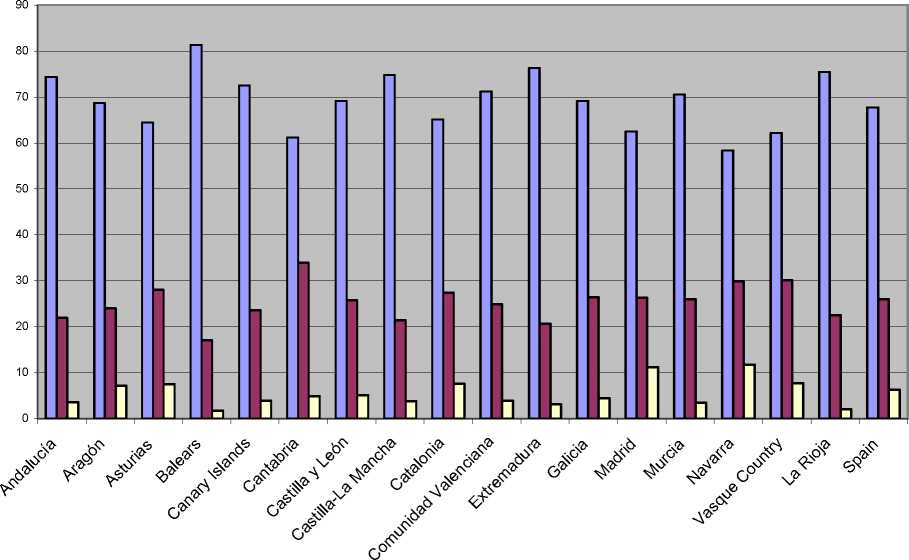Heckman’s model where survival and employment growth are estimated together by
Maximum Likelihood methods; finally, the fifth section concludes the study.
2. Spanish Regions’ Growth and Industrial Structure.
1.1. Regional Industrial Structure.
The Structure of Spanish Industry has been classified in this article following two different
criteria: first of all, Figure 1 reports the distribution of industrial firms by size and region in
200267; secondly, Figure 2 shows the relevance of the industrial sector in regional
employment.
Figure 1.- Distribution of Industrial Firms by Size. 2002.

□ 20 to 49 □ 50 to 199 □ 200 and more
6 The distribution of Spanish regions is not homogeneous. This means that we find big regions in terms of
population and employment, such as Andalucia, Aragon, Catalonia, Comunidad Valenciana or Madrid, together
with very small regions such as Asturias, Cantabria, la Rioja or Murcia. This classification depends on political
criteria, since the data are classified by “Autonomous Communitties”.
7 Following Camagni & Capello (1999) methodology, we consider small firms those with employment between
20 and 49 employees.
More intriguing information
1. Crime as a Social Cost of Poverty and Inequality: A Review Focusing on Developing Countries2. The name is absent
3. On the job rotation problem
4. ENERGY-RELATED INPUT DEMAND BY CROP PRODUCERS
5. The Demand for Specialty-Crop Insurance: Adverse Selection and Moral Hazard
6. The name is absent
7. The name is absent
8. The economic doctrines in the wine trade and wine production sectors: the case of Bastiat and the Port wine sector: 1850-1908
9. Cyclical Changes in Short-Run Earnings Mobility in Canada, 1982-1996
10. An Efficient Secure Multimodal Biometric Fusion Using Palmprint and Face Image